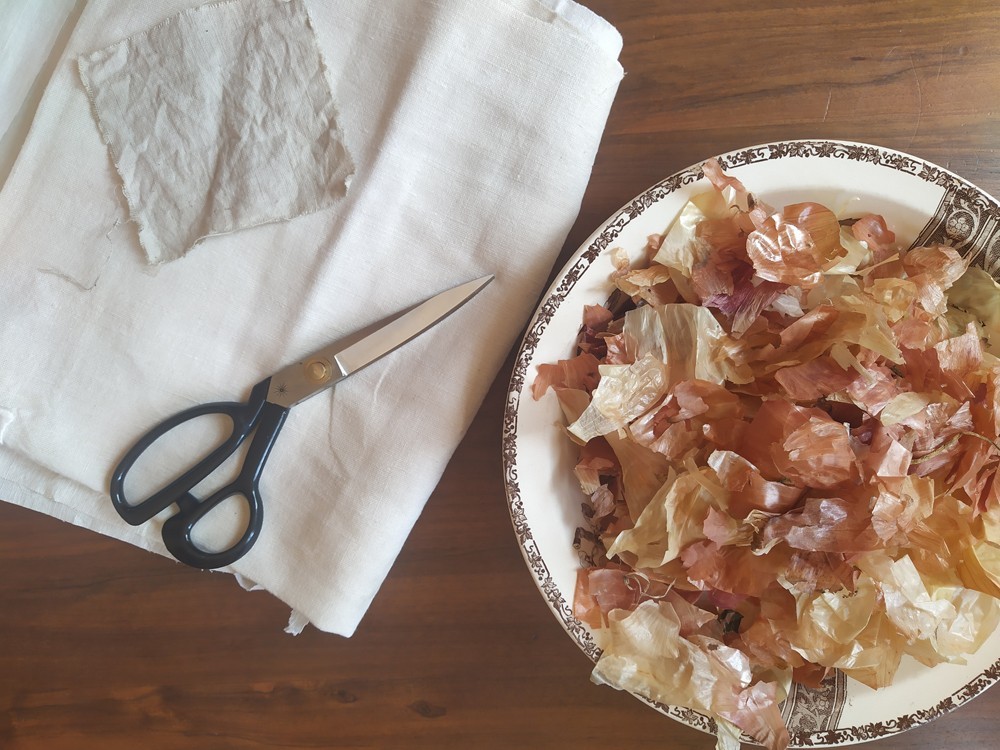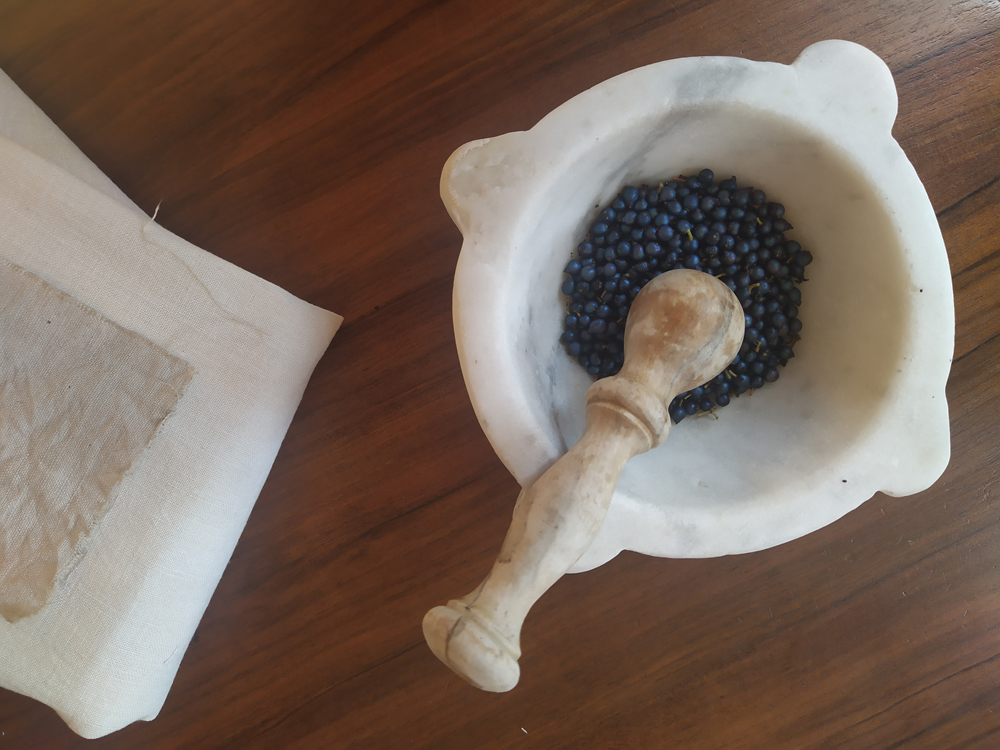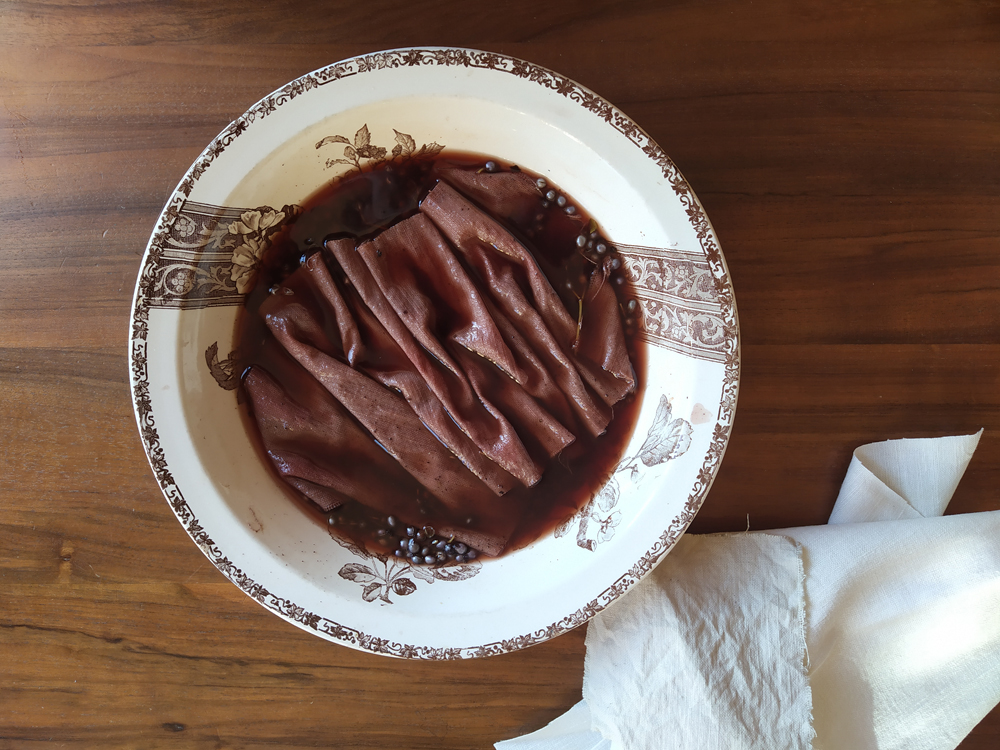A day of natural dyeing

Natural dyeing is intriguing to many of you and every time I post a photo of my experiments on Instagram, I get a lot of questions. That's why I decided to make a video of one of my natural dyeing sessions in early October, you can watch the video below. That day, I only dyed with plants / herbs / vegetables that one can easily find around. It is therefore ideal for beginners. This video has no didactic purpose, it's just there to immerse you in a calm, sunny day dedicated to my passion for natural dyeing.
Here is the list of the elements I used to dye:
- Laurustinus: light purple
- Avocado: pink
- Thyme + one coffee spoon of curcuma: verylight green
- Red ognons skins: pink
- Yellow ognons skins: golden yellow
- Pin needles: very light brown/grey
I get a lot of questions about mordanting the fabric before dyeing, it seems like a step you are worried about and that remains unclear. This is a preliminary step to the vegetable dye, necessary in most cases for the dye to set and be solid in washing and light. Using a mordant helps to ensure the most durable and long-lasting colors. Mordanting creates a chemical bridge between the fiber and the dye, because the dye alone is not always able to attach to the fiber, especially vegetable fibers such as cotton or linen. Mordanting is the most important process of preparing fibers to accept color. This is not an optional step but there are many mordant variations and some plants / roots / vegetables do not require a mordant like onion skins or curcuma. There are several methods of mordanting the fabric depending on the nature of your fiber.
A simple method for plant fibers like linen, hemp, or cotton is to soak the fabric in soy milk. To start, make your life easier, buy some organic soy milk and pour it into a container, immerse the fabric, knead and let your piece of fabric soak overnight , let dry and then dye.
There are other methods of mordanting, but to start, we'll stop there, no need to give you too much informations. Just with onion peels you can obtain sublime shades on white or ecru linen scraps without even mordnting the fabric. It's a good and simple way to start natural dyeing.
![]()

![]()
After leaving your fabric in the dye bath overnight; the longer the better; take your fabric out, wring it out and then rinse it. The dye will appear much paler and this is normal. The shade of the wet fabric in the pot is much darker than the shade you will get after the fabric is washed and dried. I rinse my fabric with white vinegar first, then I wash it with Marseille soap and water and finally, I rinse with clear water and then I let it dry in the open air.
Following this video, I made curtains for my tiny house's kitchen (we'll be moving in within 2 weeks, we'll be done soon, just have to install the stove and some shelves! In 9 months, we can do something other than a baby ;-)
![]()

 See you soon for a new video on natural dyeing, this time we will focus on mordants in a more precise way!
See you soon for a new video on natural dyeing, this time we will focus on mordants in a more precise way!


Comments
No comment at this time!
Leave your comment